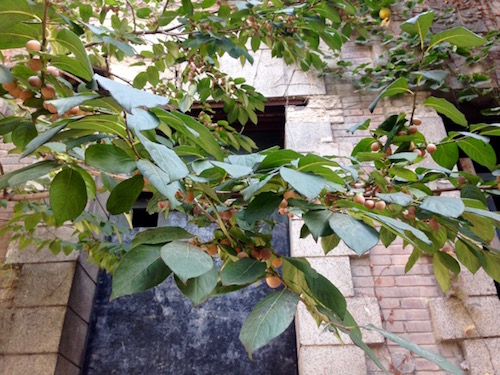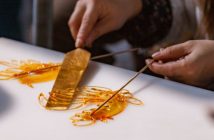
I wrote about Chaonei 81 (short for 81 Chaoyangmen Neidajie) in my October 2015 article, but I didn’t actually get to explore the famous haunted house until my boyfriend and I noticed that the gates to the compound were open on Halloween.
At first glance, access to the house seemed closed off but we found a large, open window at the back to climb through. Though I put on a poker face, I’m glad someone else was there because I got the serious heebie jeebies on the first floor.

According to a New York Times article from 2013 (VPN needed), legend goes that Chaonei 81 was once occupied by a Kuomintang officer. When the Nationalists defeated the KMT in 1949, the officer left his wife or concubine behind as he fled to Taiwan. In her grief, she hung herself from the rafters of the French Baroque-style house and has haunted the place ever since.
The property’s current owner, the Beijing Catholic Diocese, contends there was never a KMT official. The NY Times article reports that a representative from the Chinese Patriotic Catholic Association (the organization that oversees the Beijing Catholic Diocese) told a local newspaper in 2009 that the mansion was originally built as a language training center for foreign missionaries in 1910. In 1930, it was renamed the California College and also started teaching diplomats, businessmen, and scholars.

However, some historians dispute this claim and say Chaonei 81 originally served as the private residence of the French manager of a railway construction company. On the eve of the Communists’ arrival in 1949, they say the house was controlled by the Irish Presbyterian Mission – hence Chaonei 81’s current connection to the Beijing Catholic Diocese.
Any attempts at historical accuracy were overshadowed by the 2014 release of The House that Never Dies, a 3D horror blockbuster based on the legend of Chaonei 81 that drew throngs of thrillseekers to the house (VPN needed).
Soon after, the management barred access to the house out of concern that the dilapidated floors couldn’t support the weight of so many new visitors.

Chaonei 81’s inclusion on a historic preservation list means it can only be renovated, not torn down. But despite the house’s central location, no one has undertaken what would surely be a very costly – and perhaps still taboo – restoration project.

When we got around to the back of the house, there was an open window giving into a room with graffiti on the walls:


We heaved ourselves over the frame and entered the doorway leading off to the right of the room.



The first floor was very dark. The floorboards creaked under our feet; we were very careful about where we stepped. The creepiest bit was the pitch black staircase leading down to the basement, but I refused to go any further out of "safety concerns."


The atmosphere on the second floor was noticeably different; climbing the old wooden stairs was like emerging from a fog. We took our time admiring the graffiti and examining details of different rooms.





From an architectural standpoint, the third floor was the most interesting. The centerpiece was a light-filled loft with high ceilings, a brick wall, and wooden rafters. The room directly faced the southern portion of the Nanmencang residential compound, a standard xiaoqu that many of my friends have lived in; the two types of housing couldn’t be more different.


The high ceilings and wooden beams continued through the rest of the floor, where we encountered – perhaps unsurprisingly – a quote from Twin Peaks.




As we climbed out of the window at the end of our tour, we encountered two young Chinese women. "Is it scary in there?" they asked. My boyfriend and I looked at each other. I nodded solemnly. "Yes, it’s a bit scary," I said. They spoke to each other in hushed voices and huddled closer. They didn’t go in.
A Word on Safety
Not only would Chaonei 8 absolutely scare the tar out of young children, it’s inaccessible to strollers (or indeed, anything without two strong legs and arms to climb over a window frame).
If you decide to visit with older kids or teens, keep in mind you’re exploring at your own risk. Several hand-painted signs advise people against going inside the house. We stepped very lightly and slowly over the floorboards, but some parts (especially on the first floor) still felt very precarious.
Sijia Chen is a contributing editor at beijingkids and a freelance writer who has covered travel, tech, culture, parenting, and the environment. Her work has appeared in Travel + Leisure, The Independent, the Beijinger, Midnight Poutine, and more. Follow her on Twitter at @sijiawrites or email her at sijiachen@beijing-kids.com.



